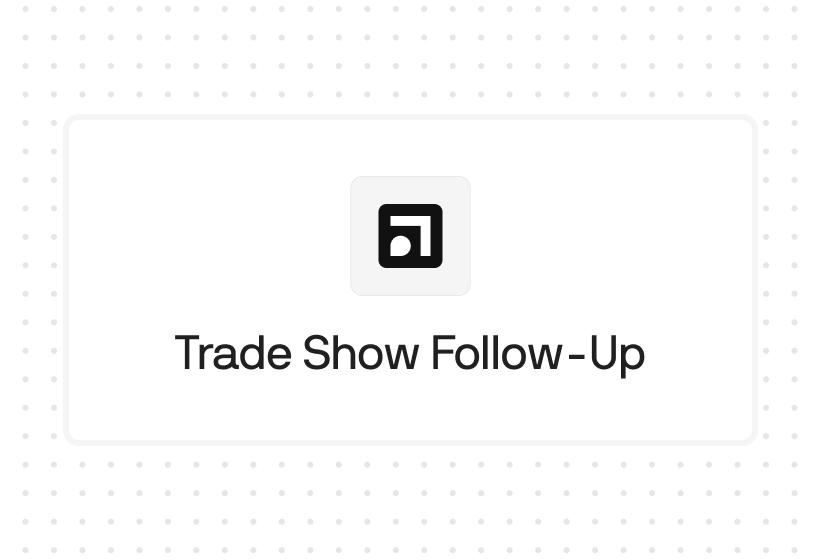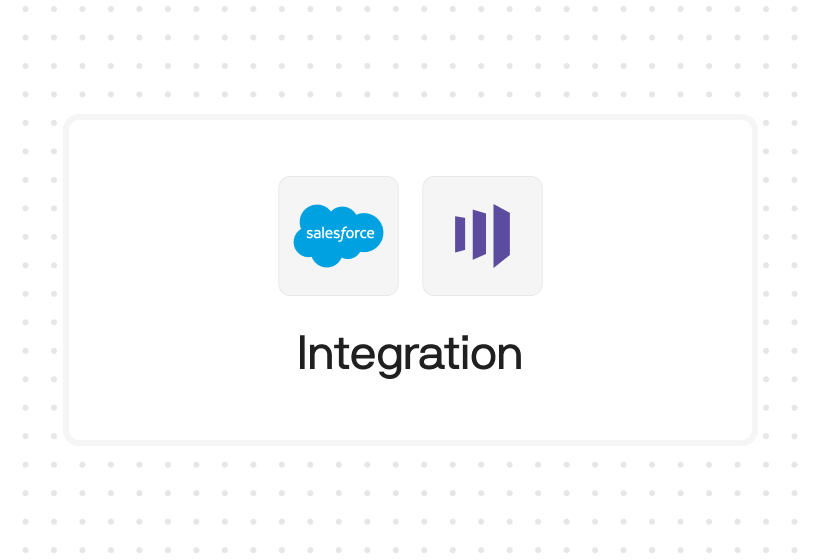Try Default

See how revenue teams automate revenue operations with Default.

Key Takeaways
Key takeaways
- Sales territory planning is a strategic process that aligns reps to the right accounts, segments, or geographies based on potential, fit, and capacity.
- A strong plan drives faster deal cycles, higher rep performance, and more consistent revenue by eliminating overlap, guesswork, and coverage gaps.
- Building an effective plan means defining clear goals, segmenting by opportunity—not just geography—and aligning rep strengths with market needs.
- Ongoing management is key: high-performing teams revisit their plans regularly, track territory-level performance, and use tools like Default to operationalize execution at scale.
Territory bloat. Overlapping reps. High-effort, low-return deals. If your sales territory planning is reactive—or worse, nonexistent—you’re not just disorganized. You’re leaking revenue.
Sales territory planning isn’t about maps. It’s about focus.
The right plan aligns reps with the best opportunities, balances effort, and drives shorter sales cycles with better win rates.
This guide breaks down what sales territory planning really means, why it’s essential for sustainable growth, and the 7 steps to build a plan that actually works—whether you’re scaling fast or fixing what’s broken.
Sales territory planning explained
Sales territory planning is the strategic process of breaking down your total addressable market into defined segments—based on factors like geography, industry, account size, or deal potential—and assigning the right sales resources to each one.
The goal is precision: aligning rep effort with market opportunity, reducing inefficiencies, and building a scalable structure that supports both growth and retention.
The important benefits of territory planning
A solid sales territory plan isn’t just a backend process—it’s a strategic growth lever. When done right, it directly impacts how efficiently your team operates and how predictably your pipeline performs. In practice, that looks like:
Better rep performance, less internal friction
When reps are clear on which accounts they own, they stay focused and accountable. There’s no confusion, no double-contacting prospects, and no turf battles. With clean ownership, reps spend more time moving deals forward—and managers spend less time resolving internal conflicts that stall productivity.
Higher win rates through better alignment
Territory planning lets you match reps to the segments they’re best suited for—whether by vertical expertise, sales cycle complexity, or deal size. This alignment leads to more relevant messaging, stronger relationships, and higher close rates, especially in strategic or competitive segments where precision matters most.
Faster ramp and quota attainment
New reps often fail not because of effort, but because they’re handed disorganized or saturated territories. A strong territory plan removes that friction. It gives reps a clear, balanced book of business so they can learn faster, stay focused, and build early momentum toward quota from week one.
Strategic coverage of your total addressable market
Most teams don’t lack opportunity—they lack a structured way to pursue it. Territory planning ensures you’re not just going after the easy wins, but systematically covering your entire addressable market. That means expanding into whitespace, protecting key accounts, and supporting long-term revenue growth beyond short-term sprints.
Improved forecasting and revenue predictability
Balanced territories generate consistent pipeline activity across the team, making it easier to track leading indicators and forecast with accuracy. Instead of wild swings in performance, you get stable, predictable revenue—and the ability to spot territory-level issues before they become systemic problems.
Together, these benefits compound. With the right territory plan, your sales team becomes more focused, more efficient, and far better equipped to drive consistent, scalable growth.
Now let’s look at how to build one that actually works.
7 steps to build an optimized territory plan
Designing territories is easy to get wrong. You’re balancing growth targets, rep capacity, whitespace, product focus, and trying to make it all add up to quota.
The following framework breaks the process into seven focused steps. It’s built for scale, rooted in revenue strategy, and designed to give your team a clearer path to results.
1. Define your revenue goals and growth strategy
Start with where you're going. Are you focused on net-new acquisition, expanding within current accounts, or penetrating a new market segment? Your territory plan should reflect your go-to-market motion, not fight against it. Without alignment here, you risk spreading your reps thin across accounts that don’t move the needle.
Pro tip: Treat planning like forecasting—tie each territory’s coverage to a clear revenue assumption.
2. Segment your market by potential, not just geography
Territory planning fails when it’s built around postal codes instead of business potential. Group your accounts by factors that matter: industry, company size, product fit, buying stage, or historical performance. A high-density region doesn’t always equal high opportunity.
3. Audit your existing coverage and rep capacity
Before reassigning anything, map what you already have. Where are reps overloaded or underutilized? Which accounts are untouched? Without a clear picture of rep activity, account status, and historical results, you’ll repeat the same inefficiencies in a new format.
4. Map accounts to segments using clear rules
Avoid grey areas. Every account should fall into a defined segment based on objective criteria—deal size, buying potential, product alignment, or strategic value. Tools like Default make it easy to route leads by segment, ownership, or enrichment logic in real time—so execution matches your planning.
Pro tip: Use a tiered coverage model to align rep effort with account value—dedicated reps for high-potential accounts, shared or pooled coverage for lower-touch segments.
5. Assign reps based on strengths and opportunity
Territories shouldn’t be handed out at random. Match rep skill sets to segment needs: senior reps on high-stakes accounts, specialists on verticalized segments, hunters on greenfield. This creates higher rep confidence, stronger buyer alignment, and faster execution.
6. Build feedback loops and performance metrics
You can’t improve what you don’t measure. Use tools like Default to track routing accuracy, lead flow quality, and conversion metrics across territories, giving RevOps visibility into what’s working and where coverage needs to adapt.
Pro tip: Flag territories with strong activity but low conversion for deeper analysis.
7. Revisit and optimize regularly
Territory plans aren’t one-and-done. Headcount changes, product lines evolve, and market dynamics shift. Set a regular cadence—quarterly or bi-annually—to reassess what’s working and what needs rebalancing.
Embed this into your sales planning cycle; not just as a reaction to missed targets.
Done right, sales territory planning becomes a true force multiplier. It gives your team clarity, aligns effort with impact, and turns territory design into a lever for predictable, scalable growth.
Best practices for managing your sales territory plan
Building the plan is step one. But the real impact comes from how you manage it over time. Markets shift, headcount changes, and product lines evolve—territory plans need to evolve too. These best practices help you operationalize your plan and turn it into a living part of your sales strategy.
Review and rebalance on a regular cadence
Set a clear rhythm for territory review (quarterly, absolute minimum). Look at pipeline coverage, conversion rates, and rep feedback to spot imbalance early. Rebalancing isn’t a sign of failure—it’s how you stay agile and aligned as priorities shift.
Track performance by territory, not just rep
Individual rep performance can hide structural problems. Monitor KPIs like average deal size, cycle length, and engagement across territories to catch issues tied to coverage, not execution. It’s the difference between coaching a rep and fixing a broken plan.
If you’re using a platform like Default, this gets easier—centralizing territory-based lead data, performance metrics, and audit logs in one view.
Build cross-functional alignment into the process
Territory plans shouldn’t live in a silo. Align with marketing on segment coverage, CS on account transitions, and finance on quota distribution. When RevOps, Sales, and GTM teams collaborate, you get a more accurate, scalable model.
Use feedback loops to drive territory intelligence
Reps are closest to the ground. Make it easy for them to share intel on account quality, segment saturation, or new opportunities. Feed that insight into territory reviews to fine-tune your segmentation and spot patterns early.
Plan for growth—not just coverage
Too many territory plans are built for the current state. Layer in expansion zones, new product GTM paths, or whitespace opportunities so your model can flex with future growth. Static plans lead to reactive decisions—and missed revenue.
Most teams think territory planning ends once the map is drawn. The best teams know that’s when the real work begins. What separates average from elite is how consistently you pressure-test, adapt, and operationalize your plan, so it scales with your goals, not against them.
Common challenges and how to overcome them
Even well-designed territory plans can fall apart in execution. Here are the challenges that show up most often (and how experienced teams address them before they impact revenue).
Misaligned territories and quota expectations
When quotas don’t match territory potential, reps either burn out or disengage. The fix: tie territory design directly to revenue assumptions—using historical performance, TAM data, and opportunity scoring to set fair targets that reflect actual coverage potential.
Overlapping ownership and lead conflicts
Nothing kills momentum like two reps chasing the same deal. Prevent this with clear, documented segmentation rules and account assignment logic. Reinforce it in your CRM and sales workflows—territory planning is only as strong as its operational handoff.
Static territory design in a dynamic market
Territories set in stone quickly become misaligned. Fast-growing segments, shifting buyer behavior, or product launches can break the model. Build in checkpoints to reassess and adapt territory design quarterly—or more often for high-velocity teams.
Lack of visibility into territory-level performance
Most dashboards show rep performance, not territory health. That’s a big miss. Track conversion rates, pipeline coverage, and deal velocity by territory to spot systemic issues that won’t show up in individual scorecards.
No feedback loop from the field
Top-down planning without field input leads to blind spots. Build structured check-ins with frontline reps to gather insights on segment saturation, account quality, and local market dynamics—then use that intel to refine your plan.
As Liam Costello, territory mapping expert at eSpatial, puts it:
“Optimized sales territory alignments result in balanced workloads for sales reps, boosting earnings potential and improving morale while delivering higher customer service levels. It is a win for sales operations, reps, AND customers, leading to higher motivation, lower staff turnover, and, most importantly, more sales.”
And the results speak for themselves. Companies can see up to 20% higher total sales within three years of optimizing their territory plans. That’s not a marginal gain—it’s the downstream impact of getting alignment, focus, and rep coverage right from the start.
Transform sales territory planning with Default
Great territory planning doesn’t stop at design; it depends on how you operationalize it. That’s where Default comes in.
Default helps RevOps and sales leaders bring territory plans to life with real-time data enrichment, automated lead routing, and full visibility into inbound sales workflows. You can segment leads, assign them based on territory ownership, and track performance across every step of the funnel—all in one place.
Built for fast-moving B2B teams, Default turns strategy into execution—without adding operational drag.
Ready to see how it all works?
Book your interactive demo and get a hands-on walkthrough of how Default helps you build smarter, faster, and more scalable territory plans.
Conclusion

Former pro Olympic athlete turned growth marketer! Previously worked at Chili Piper and co-founded my own company before joining Default two years ago.
Accelerate your growth with Default.
Revamp inbound with easier routing, actionable intent, and faster scheduling















.png)








%201.svg)



.svg)





%201.svg)



%201.svg)

